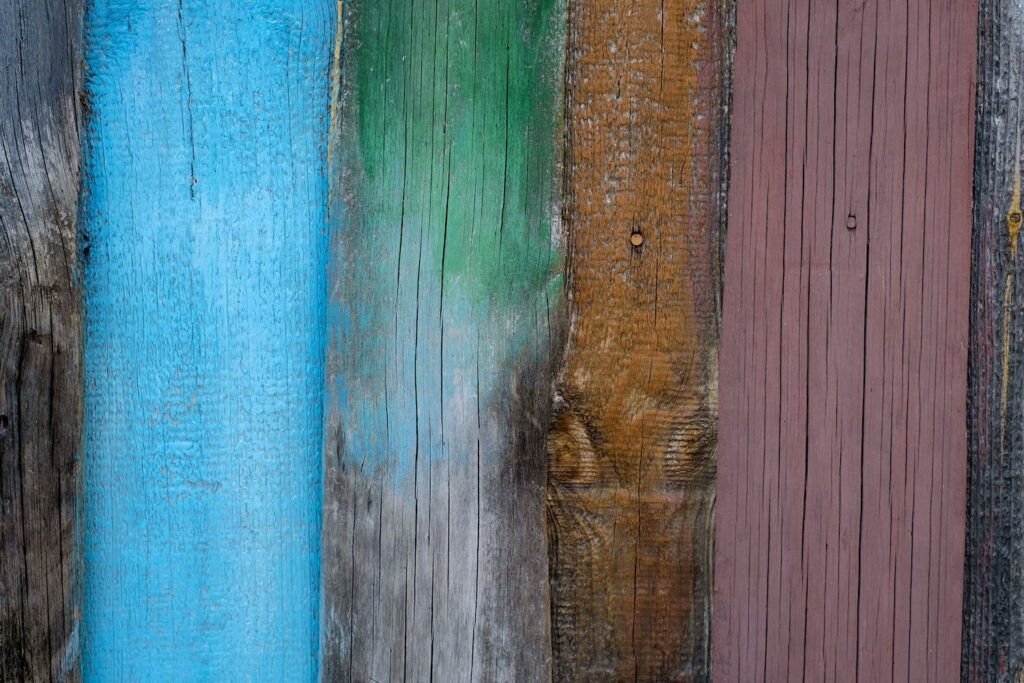Peeling or worn paint on wood can make surfaces look tired, but removing it doesn’t have to be complicated—or risky. The key is finding a method that gets the job done without harming the wood underneath. If you’re refreshing trim, restoring a door, or bringing old furniture back to life, using the right approach saves time and prevents costly mistakes. This guide shares simple, effective ways to strip paint from wood while keeping the surface intact and ready for its next chapter.
What to Know Before You Start
Removing paint from wood is more than just picking a method. Taking a few steps before you begin helps you work safely and avoid surprises.
1) Check for lead paint
If your home or furniture was painted before 1978, there’s a chance it contains lead. Lead paint can be hazardous if disturbed, so always test first using an at-home kit or hire a certified professional. If lead is present, professional removal is the safest option.
2) Know the wood you’re working with
Not all wood is the same. Hardwoods like oak are more durable, while softwoods like pine can damage easily. Identifying the type of wood helps you choose a method that won’t cause harm.
3) Prepare your workspace
Safe and Simple Methods to Strip Paint from Wood
Chemical paint removers
- Choose a low-odor, eco-friendly option for safer indoor use
- Apply with a brush, following the product instructions carefully
- Let it sit until the paint softens, then gently scrape with a plastic scraper
- Wipe off residue with a damp cloth or the recommended solution
Heat guns
- Hold the tool a few inches away and move it slowly over the paint
- Scrape softened paint carefully to avoid scratching the wood
- Keep a fire extinguisher nearby and work in a ventilated area
Sanding
- Start with medium-grit sandpaper (80-120 grit) to remove paint layers
- Finish with fine-grit (150-220 grit) to smooth the surface
- Always sand in the direction of the wood grain to avoid damage
Gentle natural alternatives
- Warm vinegar can soften paint for easier scraping
- Baking soda in boiling water helps lift paint from metal hardware
Avoid These Common Mistakes
- Scraping too aggressively and damaging the wood
- Using strong chemicals without protective gear or proper ventilation
- Over-sanding and removing more wood than intended
- Skipping workspace prep, making cleanup harder and less safe
Other Maintenance
- Check for cracks, soft spots, or other hidden issues
- Apply a wood sealer or fresh coat of paint to protect the surface
- Keep wood clean with mild products and avoid harsh chemicals
- Use pads or mats to prevent new damage to furniture and trim
When to Call a Professional
- If lead paint is involved, professional removal is essential
- Delicate trim or intricate wood details can be tricky to handle alone
- Large projects can be time-consuming and require special tools
- Structural wood issues should be evaluated by a professional inspector
Conclusion
Removing paint from wood doesn’t have to be stressful. With the right methods and a bit of patience, you can restore your surfaces without causing damage. If you encounter challenges or need an expert opinion, getting a professional inspection can reveal hidden issues and ensure your project goes smoothly.
Champia’s experienced team can help with thorough property inspections and trusted advice. Reach out today to schedule your inspection and keep your home in great shape.

